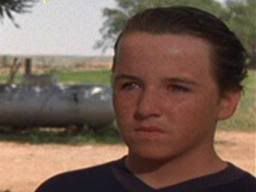Disclaimer: Don't follow this advice. I have no fucking clue what I'm dong... I'm just a random dude on the Internet. Go to a doctor.
Now that I got that out of the way...
After about seven months of jiu jitsu, I finally got my first bout of cauliflower ear. I decided to treat it myself because a) I like to experiment with my body, and b) I have no health insurance and didn't want to spend the money on a legitimate doctor. After years of ultrarunning, I'm pretty adept at fixing injuries.
For those that aren't familiar with cauliflower ear, it's a condition caused by either a sudden blow to the ear or a repeated grinding/shearing force applied to the ear. It's common among grapplers, boxers, or other fighters. Here's a prime example from lifelong wrestler/mma legend Randy Couture courtesy of http://www.mybjj.com:
Basically the cartilage of the ear separates from the connected structure, and the pocket fills up with bloody puss. If left untreated, the ear hardens into the strange shapes you see on Couture's head above. The trick is to drain the ear and compress it before the hardening occurs... usually in a few days up to a week or two.
I'm familiar with the problem from my high school wrestling days. I had a minor case on my right ear then, but chose not to treat it. The result was a very slight disfiguration that wasn't readily apparent to the naked eye. The exact location was the cymba conchea as shown here:
The latest bout occurred on my left ear. I suspect it was caused by two things. First, we recently covered guillotine chokes in class, so many people are trying them. I happen to love baiting people to sink one as it's easy to counter and you end up in excellent position. Unfortunately it's tough on the ears.
Second, I've started using my head to post on the mat more often, which is a throw-back to my wrestling days. Apparently I use the side of my head more than my forehead.
At any rate, I resisted using headgear, which is the single best preventative step a grappler can take. When the injury started, I reluctantly ordered headgear. While it was in transit, I continued to roll, which greatly exasperated the problem. The swelling went from a minor annoyance to completely blocking my ear canal.
Ergo my home treatment.
For my first attempt, I tried using a safety pin to lance the swollen part. It was too big (i.e.- it hurt like fuck.) Then I tried a utility knife blade. Same deal. It looked like I'd need a better strategy.
After a great deal of Googling, I came up with a better plan. I'd use a hypodermic needle to drain the ear, then use ice to reduce swelling coupled with foam ear plugs to provide compression.
Before beginning, I made sure everything was sterilized with antiseptic wipes then alcohol. I also cleaned intermittently, though it's not shown in the pictures. The ear itself was thoroughly cleaned, as were my hands, all tools used, and anything my hands or the tools would touch. Taking the pics proved to be difficult because I had to disinfect everything after toughing the camera. I couldn't recruit a volunteer photographer on short notice. Apparently blood and needles makes some people queezy. :-)
Anyway, this is how it went down:
"Before" shot.
Ear plugs to help create pressure once needle is inserted.
Icing to help dull the pain.
First of six drainings with 24 gauge insulin needle. Sidebar- it was entertaining buying these at Walgreen's. I had my three kids with me and felt a need to explain that I wasn't a junkie. :-)
Another draining (used a new needle each time.)
A full needle:
Icing afterward to prevent refilling:
Using ear plugs and neodymium magnets two in front, two in black) to provide pressure on the affected area:
Post-procedure results the following day:
The area is still quite swollen and I drained it again the next day. I may have to drain it again tomorrow, but so far so good.
Needless to say, I'll be wearing headgear from this point forward.
Oh, and for those that talk that "badge of honor" bullshit- no thanks. I'm too old to fall for that false machismo crap.
Any questions? Leave them in the comments section!
###

















